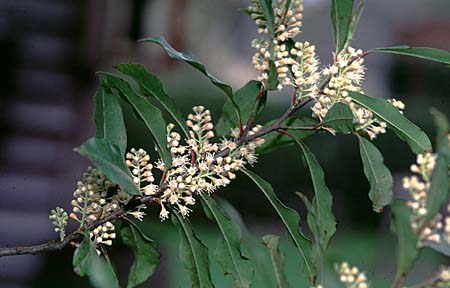|
|
||||||
Safe Plants
For those in a hurry, here is a "quick guide" to safe/toxic plants and trees: GliderGossip Safe Plants Matrix WARNING: MANY PLANTS ARE TOXIC, IN WHOLE OR IN PART. THIS ARTICLE IS INTENDED TO PROVIDE GUIDANCE AND REFERENCES SO YOU CAN DETERMINE FOR YOURSELF WHAT IS SAFE AND WHAT IS NOT.Before offering your sugar gliders any plant material (other than common fruits and vegetables) it's recommended that you research first. Don't give them anything unless you know that it's safe; for example, tomatoes, potatoes and eggplant all belong to the nightshade family, and all plant parts are poisonous except the fruit. Don't rely on the common name. There are three unrelated plants called Mock Orange; two are safe and one is toxic: Prunus caroliana, also called Cherry Laurel or Carolina cherry laurel. This plant contains cyanogenic glycoside. Do not give any part of it to your little ones.
Safe Plants Apple and crabapple: Malus domestica. The wood, blossoms and fruit are safe, seeds are toxic. Bamboo: Poaceae sp. Over seven thousand varieties. The shoots are edible, and should be boiled to remove the bitter taste. Giant bamboo contains cyanide. Bee balm: Monarda didyma. Leaves and flowers. Very sweet. Bottlebrush: Callistemon citrinus. This is an Australian native that grows well in the warmer climates of the United States. All parts are safe. Coreopsis: Coreopsis lanceolata. Leaves and flowers. Dandelion: Taraxacum officinale. Leaves and flowers. Leaves should be picked young; old dandelion leaves have a bitter taste. Eucalyptus: Eucalyptus globulus. Wood, leaves and flowers. The sap of the eucalyptus is a mainstay of the wild glider diet. Also, wild gliders build their homes in eucalyptus trees, and so your gliders will want to nest with the leaves . Geranium: Pelargonium sp. Leaves and flowers. There are many scented varieties available; one of my favorites is the rose geranium. Hibiscus: More than 200 species exist, native to all parts of the world. They are tropical or sub-tropical and for the most part don't grow in colder climates. Exceptions include the Hibiscus syriacus, or Rose of Sharon, and H. moscheutos, or Swamp Rose-mallow, which handle cold winters well. There is some controversy about the leaves being toxic to dogs, so I would offer only the flowers. Magnolia: Magnoliaofficinalis. Flowers only. Bark used for herbal remedies and there is concern about alkaloid content. Magnolia, Southern: Magnolia grandiflora. Flowers only. Mock Orange: Philadelphus coronarius. Non-toxic. I recommend flowers only. Mock Orange: Pittosporum tobira. Non-toxic. I recommend flowers only. Mulberry: Morus rubra (red), Morus alba (white). Native to Asia, Europe, Africa, the Americas. Fruit only. White mulberry sap is toxic to humans, but the wood is listed as safe for birds and chinchillas. Nasturtium: Tropaeolum majus. Leaves, flowers. Pear: Pyrus sp. The wood, blossoms and fruit are safe, seeds are toxic. Related to Apple. Phlox: Phlox peniculata. Flowers. Pot Marigold: Calendula officinalis. Flowers. Rose: Rosa sp. Too many species and cultivars to list. Offer only the flowers. DO NOT offer roses from a florist. Squash and zucchini: Cucurbita sp. Flowers are edible and very tasty. Violets: Viola sp. Includes common violet, pansy, johnny jump-up, and more. Flowers and leaves are edible. Yucca: Yucca sp. Flowers. References: [http://www.ces.ncsu.edu/depts/hort/consumer/poison/images/PrunuCa4.htm ] [http://www.busybirds.net/Toxic.html ] [http://www.aspca.org/pet-care/poison-control/plants/ ] [http://www.eucproducts.com/benefits.html ]
|
||||||
Last Edited March 16, 2015 |
||||||

